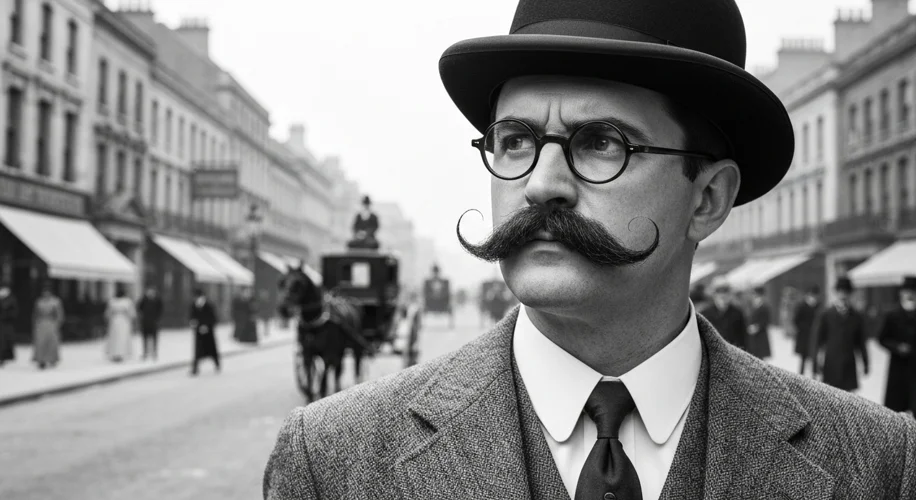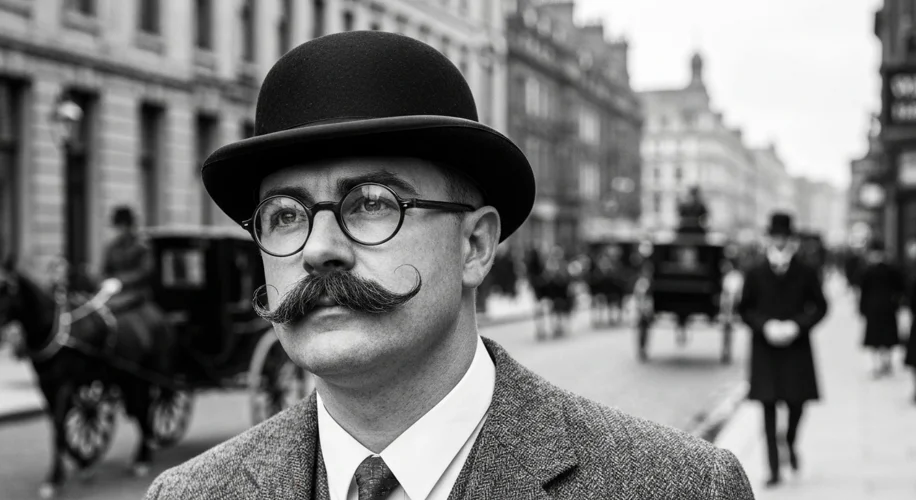It’s a classic. A seemingly simple alteration, yet one that instantly signals a shift in identity. We’re talking about the transformative power of glasses and a mustache, a disguise so iconic it has become a ubiquitous trope in storytelling, art, and even our collective imagination. But when and why did this particular combination become the go-to shorthand for altering one’s appearance to evade detection or embody a new persona?
The roots of this disguise are not as ancient as one might initially assume. While eyewear has existed for centuries, its widespread adoption as a common accessory is a more recent phenomenon. Similarly, mustaches, though a historical marker of masculinity and status across many cultures, didn’t always carry the same immediate implication of disguise. The true genesis of the ‘specs and stache’ trope likely emerged in the late 19th and early 20th centuries, coinciding with the increasing prevalence of both spectacles and mustaches in Western society.
As photography and early cinema began to capture and disseminate images, the visual language of disguise evolved. A sudden change in facial features became a readily understandable cue for audiences. The spectacles, often large and round in the early days, could obscure the wearer’s eyes, making them harder to recognize. The mustache, a prominent facial feature, could fundamentally alter the perceived shape of the upper lip and jawline. Together, they created a noticeable, yet not overly complex, alteration that was easily conveyed visually.
Consider the characters of the silent film era. Actors like Charlie Chaplin, a master of physical comedy and disguise, frequently employed variations of this trope. A simple change of spectacles or the addition of a fake mustache could transform a character from recognizable to anonymous, or from meek to menacing. These visual cues were crucial in a medium that relied heavily on mime and gesture to communicate narrative.

One can also look to historical accounts, albeit often anecdotal, of individuals using similar methods. During periods of political upheaval or personal danger, subtle alterations to one’s appearance were paramount. While detailed records of individuals specifically adopting glasses and a mustache for disguise are scarce, the principle of altering distinguishing features was well-understood. The rise of the detective genre in literature further cemented this trope. Characters like Sherlock Holmes, while not typically using this disguise himself, operated in a world where such methods were part of the fabric of intrigue and mystery. Authors understood that a few well-chosen props could signal a dramatic shift in a character’s identity to the reader.
The combination’s enduring power lies in its accessibility and its subtle effectiveness. It’s a disguise that doesn’t require elaborate costumes or extensive makeup. It’s a temporary, adaptable alteration that can be donned and doffed with relative ease. Furthermore, it plays on our tendency to rely on specific visual cues to identify people. Removing or altering these cues can, in many situations, be surprisingly effective.
Beyond mere identification, the ‘specs and stache’ disguise also carries psychological weight. Glasses can imply intelligence or a more studious demeanor, while a mustache can project virility or authority. Changing these can signal a shift in personality or intent, adding another layer to the disguise.
Even today, the trope persists. In modern films and television, it’s often used humorously, a nod to its classic status, or as a convenient plot device for characters attempting to lie low. The simplicity of the disguise, ironically, makes it a powerful symbol of the eternal human desire to reinvent oneself, to escape one’s current identity, and to navigate the world with a new face, however temporary.
The enduring appeal of the ‘glasses and mustache’ disguise is a testament to its effective visual shorthand. It’s a simple yet profound example of how everyday items can be imbued with dramatic significance, transforming the ordinary into the extraordinary, and the recognizable into the unknown. It’s a timeless trope that continues to capture our imagination, proving that sometimes, the most effective disguises are the ones we can see coming.

